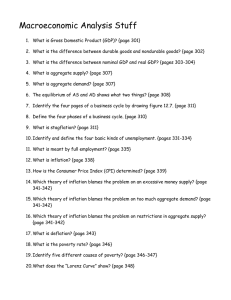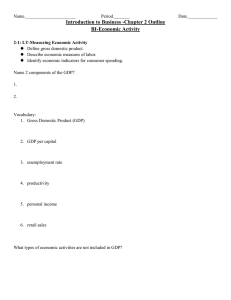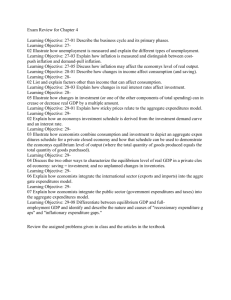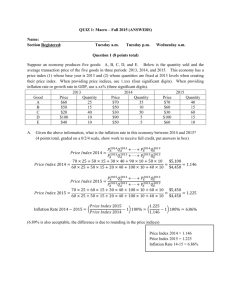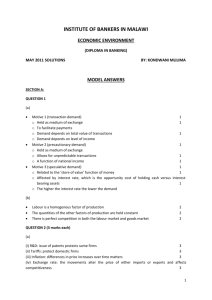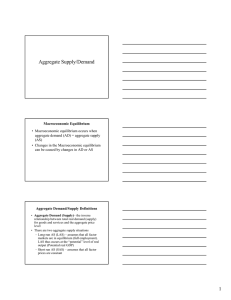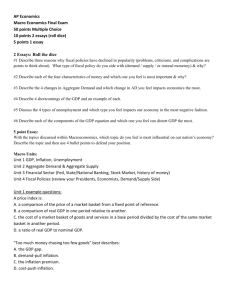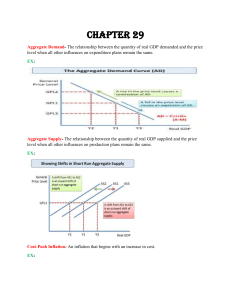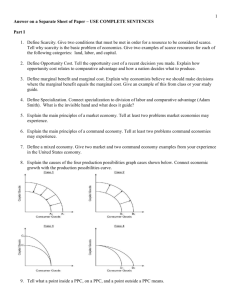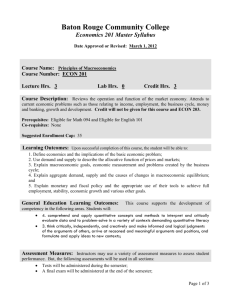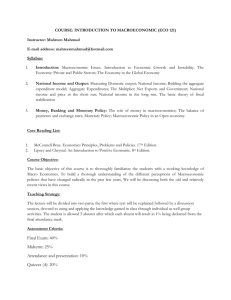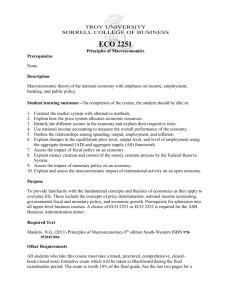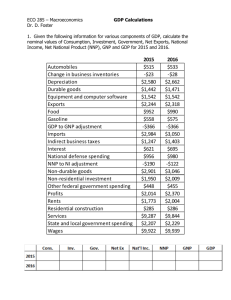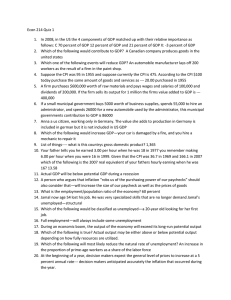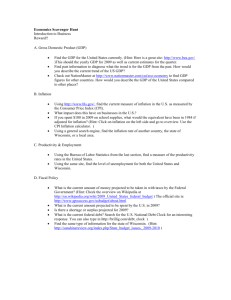Quiz 1
advertisement
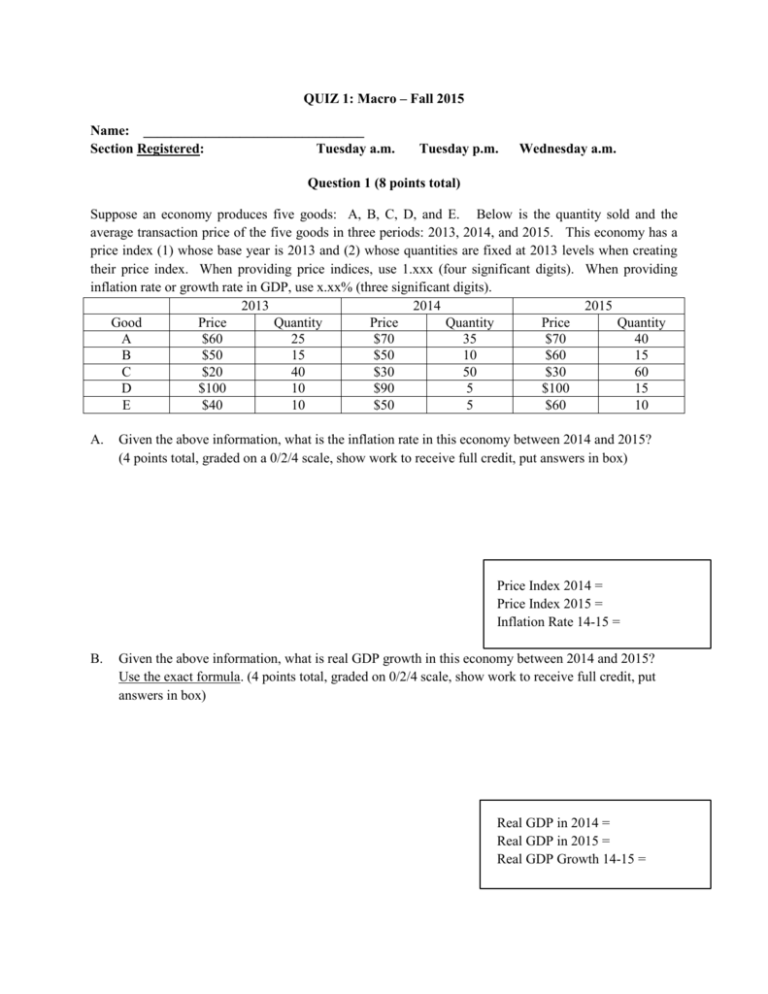
QUIZ 1: Macro – Fall 2015 Name: ________________________________ Section Registered: Tuesday a.m. Tuesday p.m. Wednesday a.m. Question 1 (8 points total) Suppose an economy produces five goods: A, B, C, D, and E. Below is the quantity sold and the average transaction price of the five goods in three periods: 2013, 2014, and 2015. This economy has a price index (1) whose base year is 2013 and (2) whose quantities are fixed at 2013 levels when creating their price index. When providing price indices, use 1.xxx (four significant digits). When providing inflation rate or growth rate in GDP, use x.xx% (three significant digits). 2013 2014 2015 Good Price Quantity Price Quantity Price Quantity A $60 25 $70 35 $70 40 B $50 15 $50 10 $60 15 C $20 40 $30 50 $30 60 D $100 10 $90 5 $100 15 E $40 10 $50 5 $60 10 A. Given the above information, what is the inflation rate in this economy between 2014 and 2015? (4 points total, graded on a 0/2/4 scale, show work to receive full credit, put answers in box) Price Index 2014 = Price Index 2015 = Inflation Rate 14-15 = B. Given the above information, what is real GDP growth in this economy between 2014 and 2015? Use the exact formula. (4 points total, graded on 0/2/4 scale, show work to receive full credit, put answers in box) Real GDP in 2014 = Real GDP in 2015 = Real GDP Growth 14-15 = Question 2 (6 points, 2 points each) For each of the following, circle the true answer. There is only one true answer to each question stem. A. Given the Cobb-Douglas production function developed in class, which of the following is true? i. ii. iii. iv. Capital and labor are substitutes in production. Jointly doubling labor, capital and TFP will double output. Both (i) and (ii) are true. Neither (i) nor (ii) are true. B. Given the Cobb-Douglas production function developed in class, which of the following are true? Assume the parameters of the production function are exogenously given. i. ii. iii. iv. The share of aggregate income going to workers is constant over time. The employment rate in the economy is constant over time. Both (i) and (ii) are true. Neither (i) nor (ii) are true. C. Given what we have learned in class, which of the following are true about macroeconomic equilibrium? i. ii. iii. iv. Aggregate income per person equals aggregate expenditure per person. Total savings in the economy equals total investment in the economy (if the economy is closed). Both (i) and (ii) are true. Neither (i) nor (ii) are true. Question 3 (3 points) Many countries attempt to grow through increasing the capital stock (holding TFP and N fixed). While this does lead a country to experience a growth in income per capita, it does not lead to sustained increases in income per capita. Why does a policy of sustained increase in K/N not lead to sustained economic growth? Your answer should be cast in terms of concepts learned in class. Your answer should not exceed 10-12 words. My preferred answer is 5 words. Question 4 (3 points total) For this question, circle the answer to the following question. There is only one true answer. In the Economist Article “Right on Target” (7/18/2015), there was a discussion about the mismeasurement of macroeconomic statistics within China during the recent year. Which of the following statistics did the article suggest was likely misreported during the first quarter of 2015? a. Employment statistics d. Export statistics b. Price statistics e. Nominal GDP statistics c. Consumption statistics

